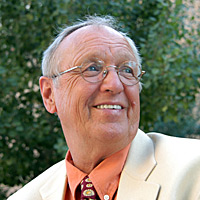The City of Moab staff gathered together in the city council chambers to review the previous year and set priorities at their annual visioning meeting held Thursday and Friday, Feb. 7 and 8.
Mayor Dave Sakrison said it has been a tradition for the twelve years he has been in office.
However, this year’s meeting was a little different.
In previous years the staff would focus on the accomplishments of the previous year on the first day. The second day the city council would present their vision for the next year, he said.
“We’re now more concerned about the future than the past this year,” Sakrison said.
On Friday the council met with department heads and staff in a roundtable discussion. “It became a collective vision of the staff and employees.”
Two of the most recurrent themes discussed were replacing aging infrastructure and financial sustainability.
“Obviously I’m concerned about revenue and the infrastructural needs of the community,” Sakrison said. “Those are the top two ones that need to be addressed.”
Staff and council discussed the need to replace aging roads, water lines, sewer systems and storm drainages.
“This is huge,” said city councilman Gregg Stucki. “It is easy to put off and leave those big expenses for someone to deal with in the future, but we have to deal with the things that people have pushed off into the future.”
Councilwoman Kirstin Peterson said that she had personal experience in dealing with the aging infrastructure when she had to recently replace her sewer connection.
“Investing in this infrastructure we can reap economically and livability of our city. We have a significant need to figure out a way to reinvest in the huge underground infrastructure that we have,” Peterson said. “It’s not just city’s responsibility. Each homeowner is invested as well.”
Rebecca Andrus, city engineer, said that she has seen other cities plan ways to replace aging systems.
“They assess each pipe and valve,” she said. “They prioritize which ones are most crucial and in need of replacement.”
The infrastructure supports more than the residents, but also a thriving tourism economy.
“We have 5000 people living here and two million visitors,” Andrus said. “Visitors need to pay enough of their portion so it doesn’t place too much of a burden on the residents.”
Events that bring in a large number of visitors were also cited as a burden on the city’s budget.
“If we’re going to continue these events, we need to pay for the infrastructure,” Sakrison said. He referred to the costs of garbage, sewer, water, and police. “We’re doing all these things for these people coming here. If we’re going to continue to grow in this realm, we need to take a look at how we’re going to fund all the things we’re providing.”
Ken Davey, economic development specialist, provided a history lesson.
“There is amusing irony to this discussion: The problems we have (related to) having too many people in town,” Davey said.
He referred to an exercise he did with councilman Kyle Bailey in 1990 when the two counted 24 empty storefronts within a block and a half on Main Street, and when businesses were open only from 9 a.m. to 5 p.m.
“We built a visitor center downtown and change started taking place,” Davey said. “Now we have to deal with the problems of that success. We wanted to improve the local economy and it worked.”
Peterson questioned the cost benefit of large events.
“We’re bringing in so many people into town and so much money. More and more of these are happening in the height of our tourist season and displace other visitors,” Peterson said. “Some of them are taxing our infrastructure more than others. This is something we need to keep in mind.”
City recorder Rachel Stenta said that there is an event recovery surcharge, however the city has never used it.
“We have a mechanism to charge, but we’ve chosen to absorb those costs,” said city manager Donna Metzler. She referred to how events are attracted to Moab because of the affordability. Yet, if it became more expensive, those events might go elsewhere. “There’s a balance and you don’t know how you will affect that.”
She said that it is easy to look at the cost side of an event.
“The benefit side is harder to figure out,” Metzler said. “We can’t do a real cost benefit analysis per event. There may be some events that bring in a lot of revenue, and others that do not, but our expenses may be the same.”
The council and staff set five common themes to focus during 2013: asset management, community design, communication, teamwork and leadership and financial stability.
“It is such an open process, it is transparent,” Sakrison said. “We’re here to serve the citizens of this community. It’s not so much about the visitors; it is about the people who live here. We want to make it better for the people who live here.”




